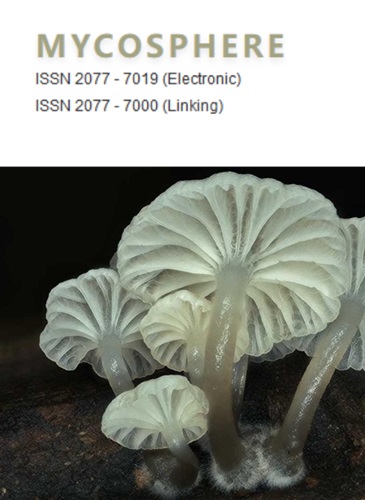sordariomyates的系统基因组学和多样性
IF 15.1
1区 生物学
Q1 MYCOLOGY
引用次数: 3
摘要
Sordariomycetes是子囊菌门的一个似是而非的,形态多样的,广泛分布的纲,形成了一个从leoptiomycetes分化出来的良好支持的分支。除了作为植物和人类病原体、物种、内生菌和真菌分类群的生态意义外,sordariomytes物种还产生广泛的化学新颖和多样化的代谢物,用于重要领域。最近对少数基因的系统发育分析大大增加了我们对sordariomyetes家族、目和亚纲关系的理解,但一些重要的类群尚未得到很好的解决。此外,还有各种副系或多系群。此外,用于建立更高等级的标准在不同的研究中仍然存在很大的差异。因此,Sordariomycetes的分类是不断变化的,仍然知之甚少,并受到许多争议。在此,我们首次构建了一个包含638个基因组的系统发育数据集,代表了Sordariomycetes的156个属,50个科,17个目和5个亚类。该数据集基于1124个基因,并得到了一个很好的系统基因组树。我们进一步基于基因组数据构建了sordariomyetes多样化的进化时间表。我们的发散时间估计结果与以前的研究不一致,表明节点年龄的估计不太精确和变化。基于这些结果,我们讨论了sordariomyetes的更高级别,并经验地提出了一个前所未有的分类框架。本文章由计算机程序翻译,如有差异,请以英文原文为准。
Phylogenomics and diversification of Sordariomycetes
The Sordariomycetes is a specious, morphologically diverse, and widely distributed class of the phylum Ascomycota that forms a well-supported clade diverged from Leotiomycetes. Aside from their ecological significance as plant and human pathogens, saprobes, endophytes, and fungicolous taxa, species of Sordariomycetes produces a wide range of chemically novel and diverse metabolites used in important fields. Recent phylogenetic analyses derived from a small number of genes have considerably increased our understanding of the family, order, and subclass relationships within Sordariomycetes, but several important groups have not been resolved well. In addition, there are various paraphyletic or polyphyletic groups. Moreover, the criteria used to establish higher ranks remain highly variable across different studies. Therefore, the taxonomy of Sordariomycetes is in constant flux, remains poorly understood, and is subject to much controversy. Here, for the first time, we have assembled a phylogenetic dataset containing 638 genomes representing the 156 genera, 50 families, and 17 orders and 5 subclasses of Sordariomycetes. This data set is based on 1124 genes and results in a well-resolved phylogenomic tree. We further constructed an evolutionary timeline of Sordariomycetes diversification based on the genomic data sets. Our divergence time estimate results are inconsistent with previous studies, suggesting estimates of node ages are less precise and varied. Based on these results, we discuss the higher ranks of Sordariomycetes and empirically propose an unprecedented taxonomic framework for the class.
求助全文
通过发布文献求助,成功后即可免费获取论文全文。
去求助
来源期刊

Mycosphere
MYCOLOGY-
CiteScore
30.00
自引率
8.20%
发文量
9
审稿时长
4 weeks
期刊介绍:
Mycosphere stands as an international, peer-reviewed journal committed to the rapid dissemination of high-quality papers on fungal biology. Embracing an open-access approach, Mycosphere serves as a dedicated platform for the mycology community, ensuring swift publication of their valuable contributions. All submitted manuscripts undergo a thorough peer-review process before acceptance, with authors retaining copyright.
Key highlights of Mycosphere's publication include:
- Peer-reviewed manuscripts and monographs
- Open access, fostering accessibility and dissemination of knowledge
- Swift turnaround, facilitating timely sharing of research findings
- For information regarding open access charges, refer to the instructions for authors
- Special volumes, offering a platform for thematic collections and focused contributions.
Mycosphere is dedicated to promoting the accessibility and advancement of fungal biology through its inclusive and efficient publishing process.
 求助内容:
求助内容: 应助结果提醒方式:
应助结果提醒方式:


